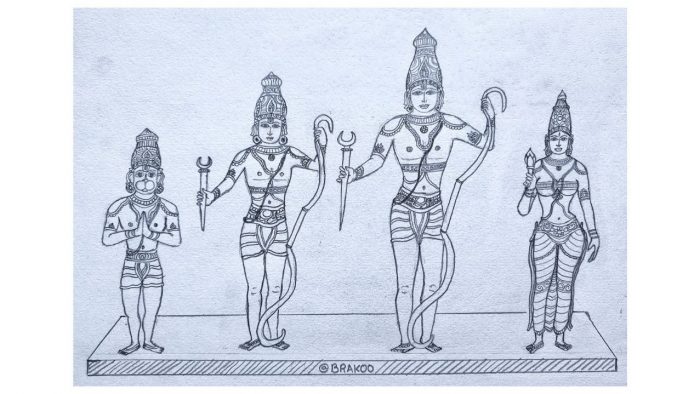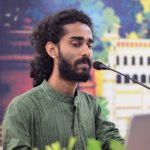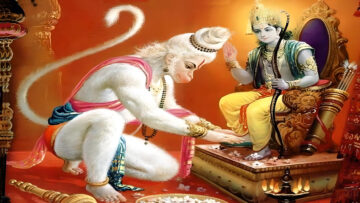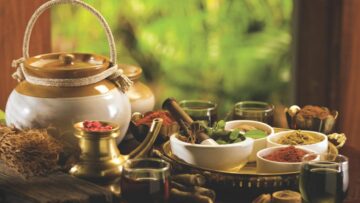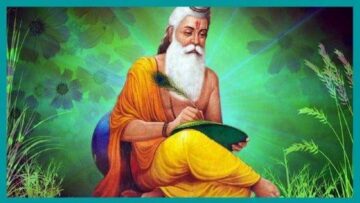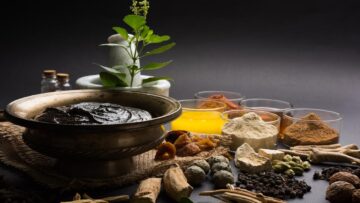Introduction
Ramayana is an evergreen, worldwide accepted historical epic written by sage Valmiki. This epic has influenced all sects of the society which is evident from the fact that there exist many different versions of Ramayana for people from different cultures and traditions.
In almost every part of our country, we can find places associated with the Ramayana while the beliefs also vary, though not significantly with respect to culture, community, region, etc.
Ramayana Parikramana happens in Pulpally Grama Panchayath (under local governance system) of Wayanad district through the western ghats. Wayanad district is a historical and natural hotspot of Kerala.
Historians claim that human settlements existed in Wayanad at least 10 centuries before the common era. There is historical evidence such as rock engravings from the neolithic age that proves the traces of human settlements before 6000 years[4].
Pulpally in Wayanad also has considerable historical significance. The name, Pulpally itself is closely connected with Ramayana which came from the bed that is thatched with Dharba Pul (grass), in which Seethadevi gave birth to Lava and Kusa.
The place has a very intimate connection with Ramayana, as many places here are natural testimonials of some of the events in the Ramayana according to the local beliefs.
As per the shila likitham (rock engraving), one of the oldest relics that was found out while unearthing in Tazhekavu, a place in Pulpally village, it was found that when an old temple was destroyed between 100-150 C.E, the group called Nalpathiyennayiravar as offering reconstructed the temple and the town[5].
The native inhabitants of Wayanad include several tribal communities like Adiya, Kattunaikka, Kurichya, Mullukurman, Paniya, Tachaanadan Mooppan, Vettakuruman, Wayanad Kadar and also the other communities include Wayanadan Chettis, Maandaan Chettis and Idanadan Chettis[6].
The local beliefs of Ramayana are prevalent among these tribes from time immemorial. The natives of Wayanad believes that it was in Pulpally that Seethadevi gave birth to Lava and Kusa after she was sent into forest by Sri Rama.
The Parikramanam is conducted in the Karkidakam month according to native Malayalam calendar which usually falls in the monsoon season of Kerala. It began in 2005 under the initiation of Mata Amritanandamayi Math envisioned to revitalize the glory of the historical temples connected with Ramayana.
This pilgrimage procession starts from Seethadevi Lava Kusha temple at Pulpally and covers 8 devi temples by foot in 24 kms. The procession after
taking darshan from the 8 devi temples concludes in Pulpally town after a cultural ceremony where several spiritual leaders address the gathering[3].
Pulpally Murikkanmar Devaswom
Ramayana and Mahabaratha are known as ‘Itihasas’. It is from the holy land of Pulpally that sage Valmiki recited the epic Ramayana to Lava and Kusha according to the beliefs prevalent in Wayanad district. The devaswom (deities property) here is known as Sri Pulpally Murikkanmar Devaswom, named after Lava and Kushas who are known as Murikkanmar.
This devaswom comes under the Malabar Devaswom Board which is under the governance of Kerala government. The Seethadevi Lava Kusha temple was renovated during the regime of Veera Keralavarma Pazhassi Raja and several meetings regarding the freedom movements were held there under the leadership of Pazhassi Raja[7]. He was the Oralan (trustee) of the temple which was then transferred to the Kuppathod Nair family.
The eldest member (Moopil Nair) of the Kuppathode family residing at Nellaratt Edam at Panamaram was in charge of Devaswom till the period of late Kuppathode Govindan alias Moopil Nair[7]. The Pulpally Murikkanmar Devaswom came under the control of the government after the implementation of HINDU RELIGIOUS & CHARITABLE ENDOWMENTS ACT (HR & CE Act) in Kerala.
Later on in 2008, when the Malabar Devaswom Board was formed, it came directly under the control of it. Even though, the trustee and manager of the devaswom are appointed from the Kuppathode family by Malabar Devaswom board as per the scheme framed in 1945[7]. It is also believed that this family is the descendants of people who accompanied Sita Devi along with Sri Lakshmana, in her exile[6].
Till the mid 90’s the land that now comes under the Pulpally panchayath which comprises of about 14,899 acres were under the ownership of Pulpally Murikkanmar Devaswom[7]. It was in the middle of the 20th century, migrants started to settle up here. The then devaswom manager used the Malabar Private Forest Act to offer 2000 acres of forest land for cultivation on lease.
From 1950 onwards a large number of migrations happened in Pulpally from Travancore. It was the time when land encroachments used to happen on
a large scale. As the influx of population continued during the 1950’s and 1960’s the forests also became the inhabitants of migrants. According to the data at the migration period, 90 people’s on an average encroached 10.48 acres accounting to a total of 943.80 acres. There is a wide range in the area subjected to encroachment and that is from 0.10 to 270 acres.
Out of the 943.8 acres of the land encroached 780 acres were encroached by migrants from Christian community which accounts for about 82.64% of the total land encroached. The rest of the land encroachments were by people from Muslim and Hindu communities owing to about 7.56 acres by 9 Muslims and 4.51 acres by 21 Hindus respectively[5].
Ramayana Parikramana Yatra
After starting the Ramayana Parikramana Teertha Yatra (pilgrimage trip) in 2005, 15 yatra happened till 2019. Even at the time of Kerala floods 2018 and 2019 the yatra happened with the involvement of hundreds of devotees from various parts of the country. The procession begins after a formal function at the Seethadevi Lava Kusha temple.
The first temple in this Parikramana Yatra is this temple which is the one and only popular temple for Seethadevi and her twins, Lava and Kusa in Kerala. The last temple in Parikramana Yatra is the Hanuman temple, after which the procession concludes in Pulpally town. The food, accommodation, transportation, and other necessary facilities are arranged by the organizing committee in free of cost[8]. 
1. Seethadevi Lava Kusa Temple Pulpally
This temple is situated in the central part of Pulpally town. The temple is placed in an area of 6 acres and the atmosphere here is so capturing with natural beauty and greenery.
Along with Seethadevi (Chedattilamma) and Murikkanmar ( Lava and Kusa ) the deities worshipped here are Talachilwan (Kiratha Siva), Ayyappan, Subramanyan, Ganapathi, Vettakkorumakan (Siva) and Nagam (Serpent). Seethadevi carries Shank (Conch) and Chakra (Wheel weapon) and is worshipped as Goddess Lakshmi. After entering into the temple through the eastern entrance the front side of the shrine can be seen, which has the installation of the deity Seethadevi.
The divine shrines of Lava Kusa’s are placed towards the right side of this shrine facing west. They are named as Murikkanmar since they have led the life of sage’s (Muni) after their childhood days. There exists a pond adjacent to the temple filled with pandanus (Screw pine) trees near the temple.
It is believed that Pazhassi Raja threw away his golden sword and other valuable belongings in this pond. The sacred pond of this temple is the largest among the temple ponds in Wayanad district. The main festival of the temple is celebrated from 18th to 23rd of the Dhanu month according to the native Malayalam calendar.
Just near the temple, there exists a Vellatuthara, which according to popular legends were the playground of Lava and Kusa and it was also the place where they practiced martial arts. In the second half of every Malayalam month except Karkidakam and Vrischikam a special ceremony called Vellattu is observed there by the members of Kalanadi tribes[7].
At the time when caste-based discrimination was prevalent in Pulpally, it was during this temple festival, people from different castes congregate to celebrate the festival. Customary rights and
responsibilities are entrusted to each of these different communities. The responsibility for organizing the festivals was for three Chetti communities namely Eriapplly, Yogimoola, and Etamala.
The pandhal (shed) construction, wood supply, supply of cane baskets, clearing of forests, cleaning of vessels, cutting of vegetables and collection of banana leaf for serving food etc. were assigned to each community based on the customary rights. The right of preparation of the feast was with the Brahmin community. The administration was in the hands of Kuppathod Nair family. The festival begins with the Vellattu (a ritual) on the Dhanu month according to the Malayalam calendar.
According to the traditions, a representative from Kuppathodu family and Etamala, Eriappally, Yogimoola Sthanik Chetties, Kondamala, Kurichipatta Mooppan, Matappally, Etamala, Mathils has to participate in the function.
All these tenants should also have to offer rice in the temple. Adivasi Naikas and Mullakurumars who fall among the native tribes have special status and rights. The custodian rights of hundi in the temple were for Yogimoola Chettis[5].
Likewise, the temple festival is one that unites people from all caste and sects even at times when untouchability was thought to be very prevalent.
2. Chundakkolli Sree Karinkali Temple
After taking darshan from the Seethadevi Lava Kusa temple the Parikramana Yatra reaches the second Devi temple, Chundakkolli Sree Karinkali temple covering a distance of 1 km. The thousands of people coming from various parts of the country form groups and sing the hymns of Rama and Seetha. They also dance in bliss along with the beats of several musical instruments like drums, dholak, ganjara, etc. Here the Devi is worshipped in her furious form.
Poojas are scheduled monthly during the Sankramam. Special yearly poojas are conducted on Dhanu 22 according to the native Malayalam calendar under the guidance of the Tantri. The temple is surrounded by huge Rosewoods. Some of the largest Rosewoods of Kerala are found here and that is one of the main attractions of the temple[2].
3. Sisumala Kavu
Sisumala Kavu, where the divine shrine of Seethadevi resides is one of the most important attractions of the Ramayana Parikramana Yatra. The yatra goes through the top of a mountain, currently known as Seetha Mount or Sasi mala which came from the name Sisu mala, the mountain where the twins of Seethadevi, Lava and Kusa used to play during their childhood.
It is also the place where Lava and Kusa captured the horse sent by Rama, King of Ayodhya, in connection with his Aswamedha Yaga (horse sacrifice), prompting Rama to intervene personally and come to this place to get the horse released, according to the local belief systems[6].
People visit here only rarely and one of such occasions when people visit here in large numbers is during the Ramayana Parikramanam. The priest of the Sisumala Kaavu, Narayana Swami says that the presence of deities here are very powerful since the place is privately maintained for the deities most of the time.
The main offering for the deities here, from the devotees is Mulavadi samarpanam (bamboo stick offering) and coconut offering. At the time of Parikramana yatra, the devotees are given a Mulavadi (Bamboo stick) and coconut, before climbing the hill to offer it at the abode of the deities[9].
The deities worshipped here are mainly Sri Rama and Seethadevi along with Hanuman, Chamundi devi, Sage Valmiki , Lava Kusa’s, Malakkari, Kirathamoorthy, Ayyappa, Subramanyan, Ganapathy and Naga daivam. Here Sri Rama is worshipped in the sankalpa of Rama who came in search of Sita, according to the devaprasnam (An astrological ritual carried out to interpret the will of the gods).
Kirathamoorthy and Malakkari or Malakku Adikari (custodian of the hill) is worshipped in the sankalpa of Shiva according to the tantra. The Naga sankalpa here is considered as the Ananda Nagam of Sri Rama. It is believed that this place is one of the few places in Pulpally where Seethadevi and Lava Kusa had spent their life in exile. Poojas and Gurusi are conducted here on the first day of every month according to the Malayalam calendar[9].
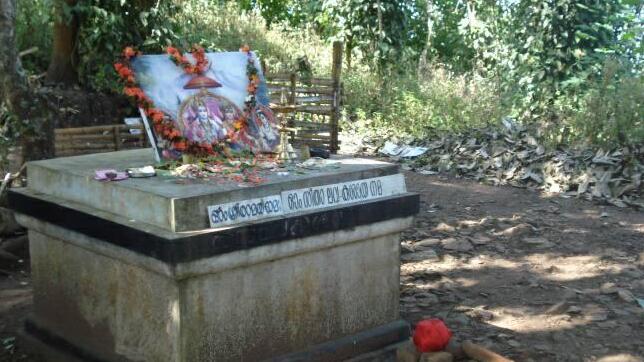
Sisumala Kavu
I. History of Sisumala
According to the customs of the native tribal community, they worshipped Seethadevi as Alathoor Devi. They also worship Sri Rama as the Rama who came in search of Seetha. Basavanna, from the Kattunaikka community says that there are three deities that are worshipped by the native tribes from the ancient time onwards.
The members of Oorali, Paniya and Kattunaikka tribal communities worship the deities of Gulikan, Chamayakuttan and Mattimakkal respectively. According to their beliefs they were the three guards of Seethadevi and provided all the facilities for devi during the time of her exile. These folktales are orally transmitted over generations in the tribal communities.
The idols of their deities were installed in a few distances below the present shrines of Seethadevi and were worshipped till the time of the migration period. Later on, during the migration period as the ownership of this land was transferred to a migrant from the Christian religion, the worship was blocked by him, says Basavanna. During the time of worship the tribal people used to offer dakshina for the deities, after marriage in their community[10].
Cheriya Madan from the native Paniya tribal community says that his ancestors used to manufacture their work equipment such as axe and knife for offering that to their deities, during the festival in the hilltop. He says that Seethadevi was worshipped in Sisumala from time immemorial and the temple festivals were the occasions when the tribal communities used to join together and perform their primitive artforms like Utchal kali.
It can be seen that the temple festivals provided a platform to preserve and protect the culture and traditions of the native tribal communities[11]. The shrines that are worshipped currently in Sisumala were built in the 1970’s. It was Omana, who migrated to Pulpally during the 1970’s started worshipping Seethadevi thereby lighting a lamp daily.
Consecration of Kirathasivan was performed and lamp was lit continuously for 41 days, as per the the devaprasnam, to get rid of the wildlife attacks. Later on, after a devaprasnam conducted according to tantric methods, the presence of the sub deities were found out and they also were given respective positions in the hilltop. Omana says that after the 41 days of continuous worship, there haven’t been any wildlife attacks in their land[12].
II. Specialties and Attractions
There are a lot of specialties and natural attractions in this place. An aerial view of Pulpally and some parts of Beechanahalli Dam located in Karnataka state can be seen from the top of the hill. The place is also a home for several natural wonders.
The bamboo grown here does not have thorns in it since it was the place where Lava and Kusa used to play during their childhood. Even though the Leeches are very common in every forest of Wayanad, no mark of leeches can be seen in Pulpally.
It is believed that when the leeches bit Lava and Kusa from Sisumala, Seethadevi cursed them. From the top of Sisumala, Valmiki ashram in Asramakkolli can be seen. It is believed that Valmiki used to watch the twins Lava and Kusa while they were playing in Sisumala[9].
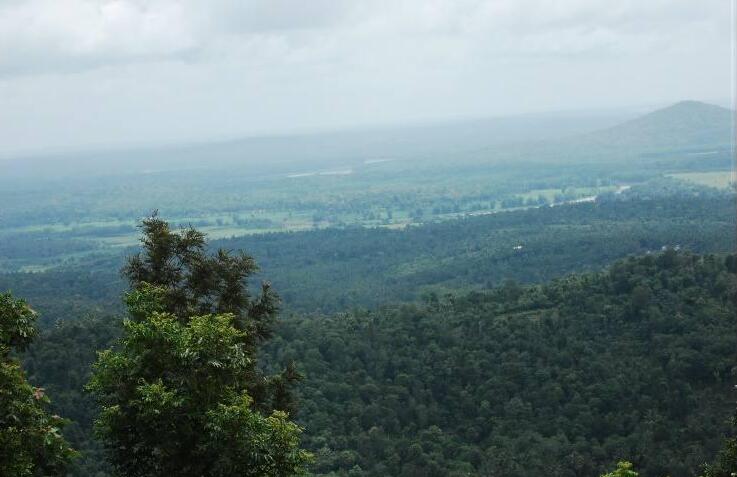
View from Sisumala kavu
4. Sisumala Seetha Devi Lava Kusa Temple
In the late 1970s the Shiumala kavu was attached to the Sisumala Sri Seetha Lava Kusa temple built in the valley of Sisumala for Seethadeevi and Lava Kusa’s . This temple was built in the 1960s after finding an ancient rock with scriptures on it. The river that is flowing beside this temple is called Kannarampuzha. It is believed that this river is formed from the tears of Seethadevi and hence it got the name Kannuneer puzha (river of tears)[5].
And as time passed by the name got changed into Kannarampuzha. The name of the place where this temple is located has also a close connection with Ramayana. It is believed that the name Channothukolly, the place where this temple is located got its name from Channabathu Kolli (the place where small rice is grown ).
This small rice which used to be grown here was used to make payasam (a sweet pudding) for Seethadevi according to the local belief[9].
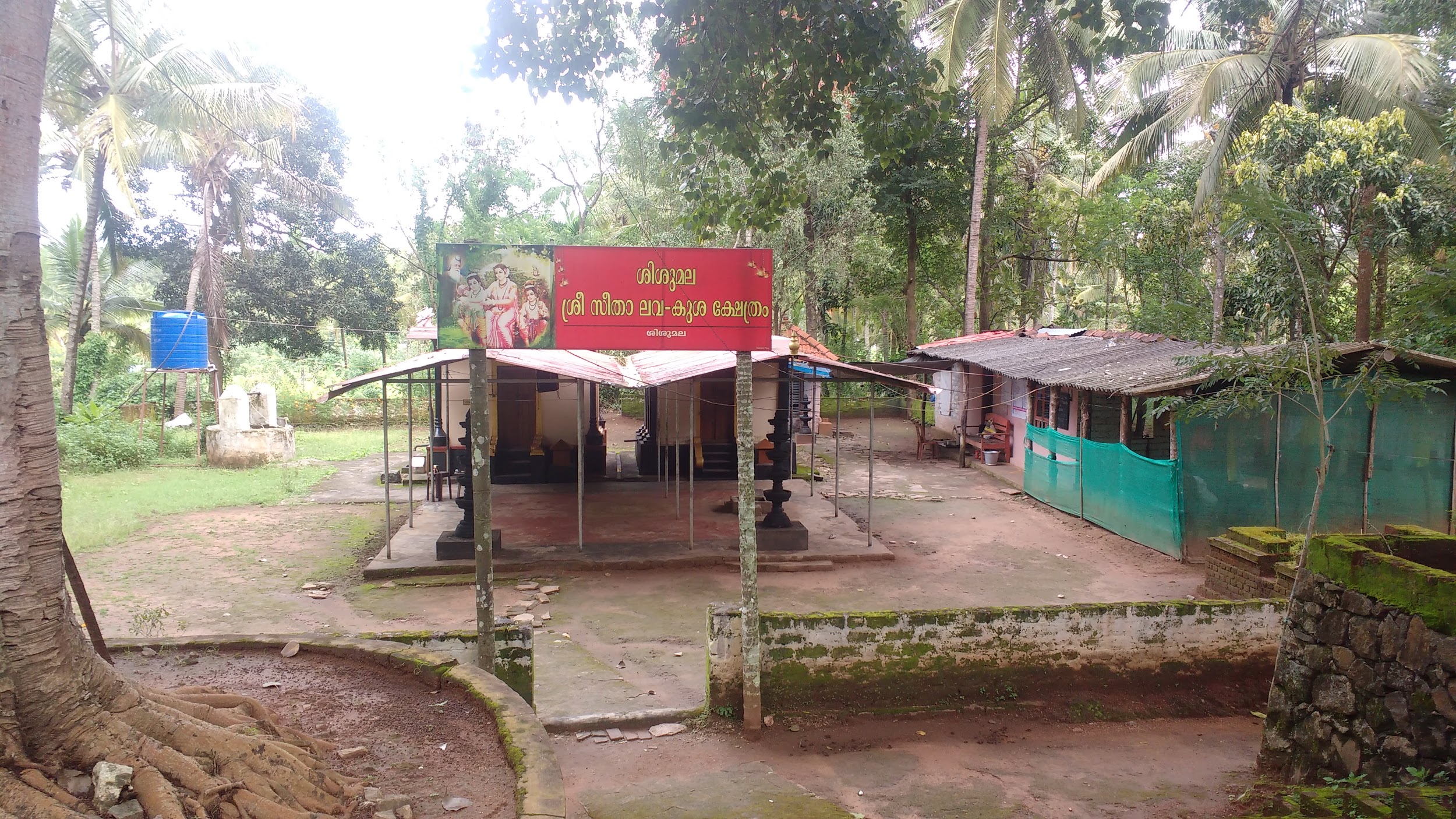
Sisumala Seetha Devi Lava Kusa Temple
5. Devargedha Shiva Temple
The procession reaches the Devargedha shiva temple by chanting the names of Rama, singing Rama bhajans, and dancing to its tunes forgetting one’s sorrows and miseries. The temple is situated in the boundaries of Kerala and Karnataka. The temple secretary Mr. Radhakrishnan says that the temple was worshipped by the tribals in the ancient times.
The name Devargedha in Kannada means the abode or field of Deva. The remainings of the idols of Lord Vishnu and other deities were found in the 1950s from a field adjacent to the present temple, under the Koovalam tree, and in the 1960s a temple was rebuilt under the same tree.
The main deity here is Lord Shiva and Vishnu along with the sub deities Ganapathi and Bala Badra and Chamundi. The temple is famous for its Shivaratri festival and people come here in large numbers from different parts of Kerala.
Another belief connected with this temple is that it is a sacred place where the deva ganas used to do meetings. Radhakrishnan also says that Ramayana Parikramana Yatra has helped in increasing the popularity which also led to an increase in the temple economy[13].
6. Mandapamoola Seethadevi Atiralan Temple
The temple in the Parikramana path after the Devargedha Shiva temple is the Mandapamoola Seethadevi temple. The temple is small in size, yet the historical importance of this temple is considerable according to the local traditions. This temple is close to Valmiki’s hermitage. It is believed that this is said to be the place where Lava and Kusa exhibited their archery talents before Seethadevi after mastering it under the guidance of Sage Valmiki.
It is also believed that the kids, drank water from a spring in Anachanahalli, a place beside the temple, after becoming tired, showcasing their talents before their mother. The Athiralan temple also means that the shrine of deity, who is protecting the atir (border). The temple surroundings are filled with the Koovala trees (Aegle marmelos). This tree is considered as a sacred tree according to the Hindu beliefs[4].
7. Valmiki Ashram
Valmiki ashram (hermitage) is the most important spot in the Parikramana Yatra. It is believed that, Ramayana, the most beautiful epic of all times was written from here by sage Valmiki. This ashram is considered as the Moolasthanam of the main temple, Sree Seethdevi LavaKusa temple under the Pulpally Murikkanmar Devasvam. It is in this ashram where Valmiki received the pregnant Seethadevi while Rama sent her into exile.
This divine hermitage is also the birthplace of Lava and Kusa. The 7th day after Vishu i.e Medam 7 according to the Malayalam calendar is believed to be the birthday of the twins Lava and Kusa. On this day special yearly poojas and rituals are performed[7].
The Naiykans ( a native tribal community) will reconstruct the hermitage by thatching the roof with Dharba Pul (sacred grass), before the special ceremonies happen[5]. This tradition was live from ancient times onwards and is still continuing.
Even though in the olden times it was done free of cost as their customary rights, presently the Naikkars are given remuneration for their service. A tharavadu (family) is given the rights to lit the lamp daily, by the Pulpally Murikkanmar Devaswom. No daily poojas are conducted here.
The place is taken care of by the tribal people. One of the main attractions of this ashram is, there exist a few Mandara trees in its courtyard and two flowers blossom every day in the trees around the year, even in the offseasons and hot summer. It is believed that the two flowers represent Lava and Kusa[4].
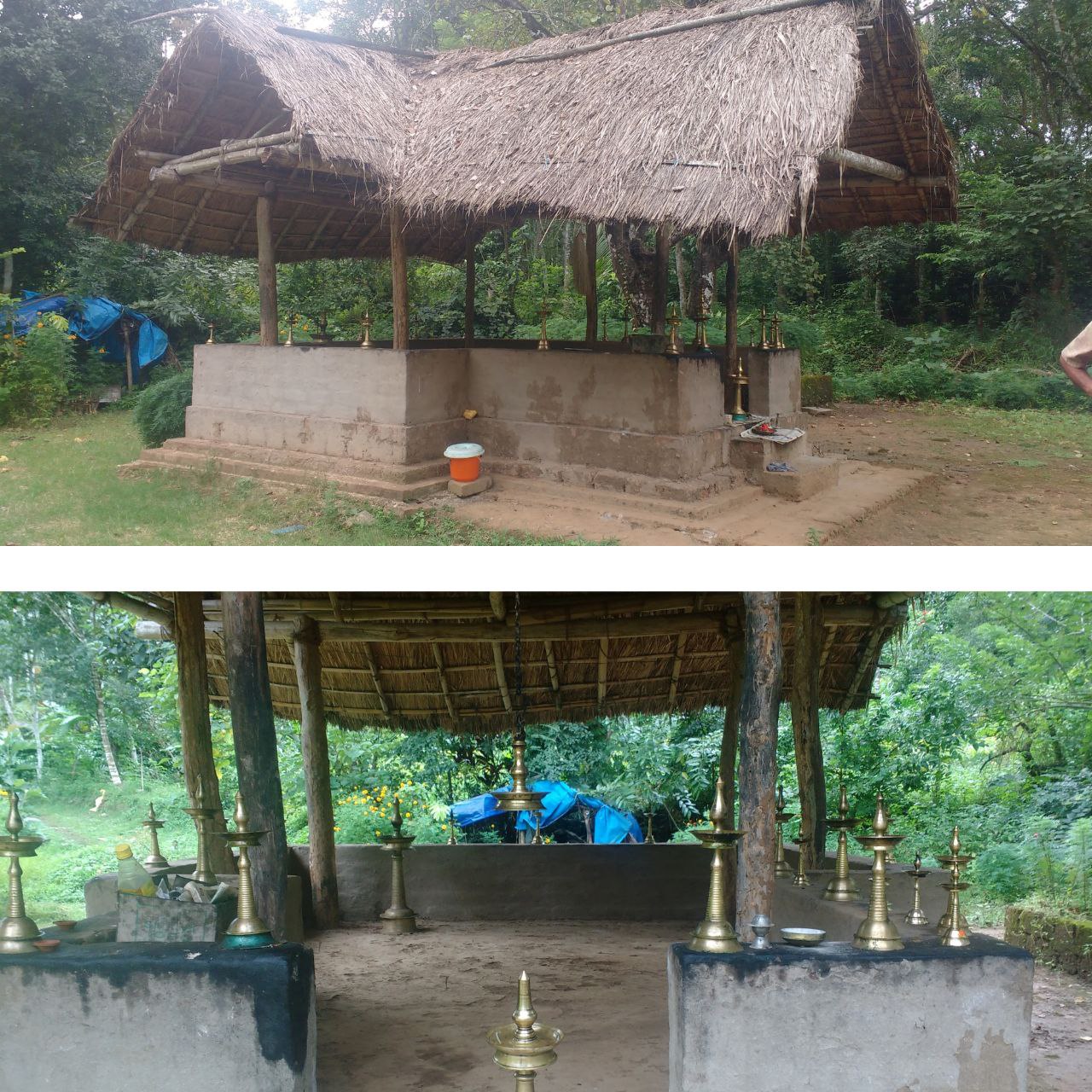
Valmiki Ashram
Beside the Valmiki, the ashram is the Munipara, a cave where it is believed that Valmiki performed tapas (meditation)[14]. After giving homage for Seethadevi in his hermitage, it is believed that Valmeeki left to Munippara from where he has written the great epic Ramayana.
The poojas and rituals are done here for Seethadevi, Lava Kusa’s, Talachil, and Valmiki. People believe that the rock just above the cave was the spot where Lakshmana alighted from the chariot with Sita[6].
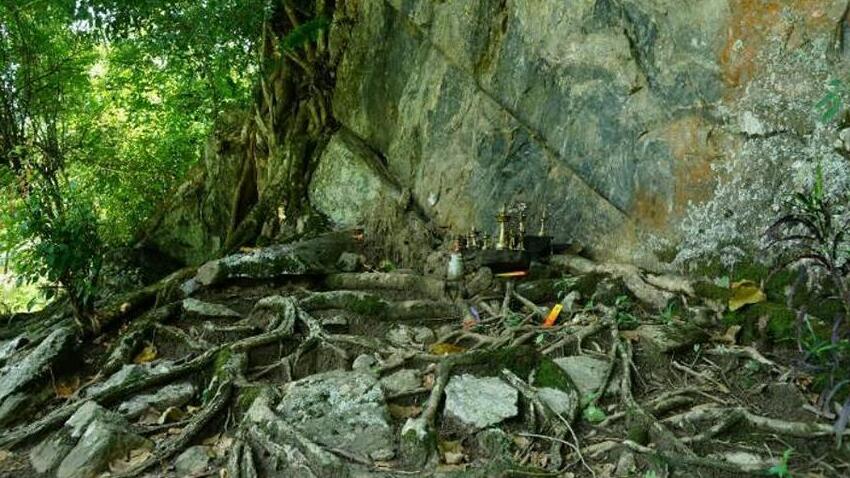
Munippara
8. Eriyapally Seetha Devi Temple
In the Parikramana path, the next Devi temple after the Valmiki ashram is Eriyapally Seethadevi temple, which is located in the courtyard of a house. This temple has a mystic connection with the house beside it.
A present-day lineage of the family in this house, Mr. Mohanan says that in the teenage period of Lava and Kusa, after mastering the archery techniques and completing the education, they came to this house with Seethadevi during her exile period. He says that they asked for milk and bananas to the eldest member of the house.
It was the time when their family was in extreme poverty. Without having the knowledge that it was Seethadevi who visited their house, the housemaster said that there is no milk and bananas in their house. Devi asked him to go back to the house and search once more.
When he went back to the kitchen to look for food, he was surprised to see plenty of milk and bananas. He offered that to Seethadevi. Devi asked him to move aside from the place where Devi and the kids were having food. After some time when the housemaster came looking for Devi, he couldn’t find any traces of her.
The housemaster then conveyed this incident to his wife. On the same day, he had a dream at night where Lava and Kusa appeared before him and said that they had come there to stay and they require a place for themselves to reside in the courtyard of their house.
They told him that the family will gain the name and fame eventually and also asked him to build a pidavu (ox shed) and vallam (a large container for storing rice, made with bamboo). Even though the person was not completely convinced with the dream, he arranged everything according to Lava Kusa’s instruction in the dream. Surprisingly, on the third day, he witnessed the ox shed filled with plenty of ox’s and the rice container filled with rice.
Also, an idol of Seethadevi was installed in the courtyard of the house facing Lava Kusha’s idols. It is also believed that Lava Kusa’s, after leaving this place, left to Sishumala, from where they went to Karnataka. The Lava Kusa’s are worshipped in a temple in Karnataka and members of this family used to go there with the traditional weapons, as a customary right[15].
9. Chedattinkavu
This temple is the last devi temple in the Parikramana path. The temple is considered as the moolasthanam (origination point) of the Pulpally Murikkanmar Devaswom and also the most important spot in the Ramayana Parikramana Yatra, since the legend says that it was from this place, Seethadevi disappeared into the Earth, her mother.
The temple has uncompromising natural beauty. The thick forest surrounds the temple even though the temple is just one kilometer away from the main Pulpally town. The lush green atmosphere adds to the divine and placid ambiance of the temple. Seethdadevi, the presiding deity of this temple is known as Chedettamma (mother without hair) and is worshipped here in the Sankalpa of Vana Durga according to the tantra.
The sub deities worshipped are Sapthamatrukkal, worshipped in the form of goddess Vaishnavi, Ganapathi, and Veerabadran. The shrines of Lava and Kusa are placed on the eastern side of the temple. According to popular folklore, this is the only place where Sri Rama, Seethadevi, Lava Kusa’s, Bharatha, Shathrugna, Lakshmana, Hanuman, Sage Valmiki, and other Gods have met together[7].
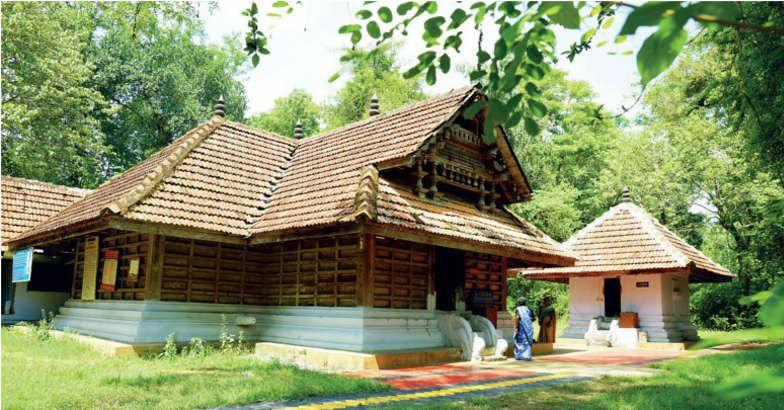
Chedattinkavu
I. Legend
During the Ashwamedha Yaga (horse offering) conducted by Lord Rama, the horse sent by him was caught and tied by his own sons Lava and Kusa at Sisumala. Even after the intervention of Hanuman and Shatrughna the horse couldn’t be taken back and there arose a situation when Sri Rama himself had to come[6].
When Rama himself intervened and had a battle with Lava and Kusa, he realized that Lava and Kusa were his own son’s and then he goes to meet Seethadevi to invite her back to Ayodhya, his kingdom.
However, he urges Seethadevi to perform agni shuddhi (fire test) to prove her purity for the sake of the citizens in his kingdom. Having heard this, the heartbroken Seethadevi calls for mother Earth to take her back to the home from where she came.
While Seethadevi was disappearing into a cracked open Earth, Sri Rama tries in vain to hold her back but get hold of only her jada (thick hair) and she goes off into the Earth leaving her broken hair in the hands of Rama, thus came the name Jadayatta amma (mother without hair), which later acquired the name Chedettamma through language modification over more than a thousand years of time. The crevice on Earth from where Seethadevi disappeared into, can still be seen in the temple[7].
10. Hanuman Temple
Ramayana Parikramana would never be complete without taking the darshan of Hanuman, the greatest devotee of Sri Rama ever. The Hanuman Kovil (temple) is the final temple to visit in the Ramayana Parikramana Yatra. It is believed that Hanuman led the horse in the Ashwamedha Yaga conducted by Lord Rama. Lava and Kusa, the extraordinary sons they were, of a very powerful father, defeated Hanuman and tied him up to a tree. After knowing that Lava Kusa had tied up a monkey, Seethadevi came to see who it was.
Hanuman was like her own brother since he played a key role in finding her in the Ashoka forest, rescuing her from Ravana in the epic battle and was also with her in most of her tough times. Seeing Hanuman tied to a tree helplessly, Seethadevi was taken aback by grief and tears roll down from her eyes.
Hanuman also starts crying, seeing Seethadevi, probably thinking of all the bad plights she had to go through in her entire lifetime. Lava and Kusa then released Hanuman as per the instruction of Seethadevi. Since both Hanuman and Seethadevi were crying, seeing each other, the deity of Hanuman in the temple is one with a sorrowful mood[2].
IV. Culmination of the Ramayana Parikramana Yatra
The Ramayan Parikramana Yatra, from the Hanuman Kovil moves to the center of the town with participation of thousands of devotees, people enacting various figures of Ramayana such as Sri Rama, Seethadevi, Hanuman, Lakshmana, Lava Kusa’s etc. People from all sects and communities of the society join together to perform their respective art forms in the procession.
The tribals perform their traditional artform such as tudi and dance in bliss. It also becomes a platform to showcase various other artforms like Kanakaattam, Kavadiyattam etc.
The devotees sing louder and louder and there comes a point where only the names of Lord Rama echoes melodiously in the air. The vocal voices together even unbelievably overtakes the sound of the Shinkari melam (percussion performed using chenda, the ethnic drum).
The devotees says that they reach in a state of bliss where they forget everything of their worldly sorrows and sufferings. Due to their selfless surrender and very strong belief on Ram Naam, the devotees claim that they have received many divine experiences and hence the number of people increases each year in Ramayana Parikramana Yatra.
The Ramayana chanting, that has been happening in the town since the starting of Parikramana ends when the procession reaching the center of the town. The procession ends with the Ramayana message from spiritual, cultural, and political leaders, reminding us all about the importance of Ramayana and the influence of this great epic in society[3].
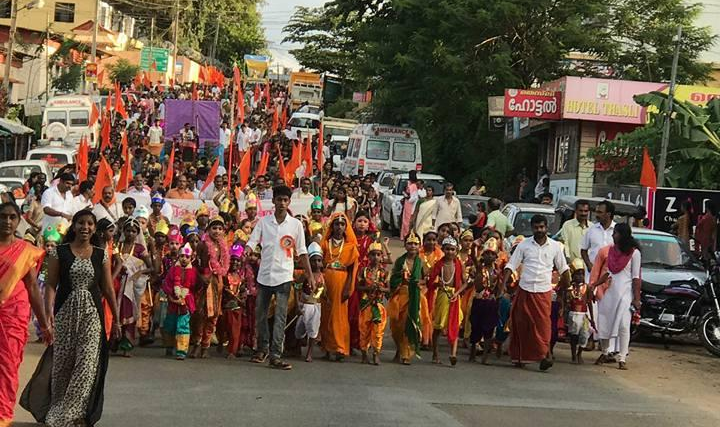
The culmination of Ramayana Parikramana Yatra
V. Conclusion
Ramayana Parikramana has almost been successful in its vision of revitalizing the glory of the temple’s that have great historical significance. Having celebrated the 15th Ramayana Parikramana celebrations in 2019, the popularity of the temples being covered in Ramayana Parikramana has increased, which were in devastation phase after the migration period. The authorities of temples such as Devargedha temple also claim that the economy of the temple has increased after the beginning of Parikramana Yatra[13].
Even though some of the temples such as Sisumalakavu face many challenges such as economic and religious in nature largely after the migration period. The traditions and worship of the deities of native tribes are also in the devastation phase. The fact that it is only during the Parikramana Yatra people from all regions and sects of society join together to visit these temples, also increase the importance of the yatra.
The way how Ramayana influences the local beliefs of people is still a mystery. There are different beliefs of Ramayana prevalent among different sects of society irrespective of caste, religion, region etc. Most of these beliefs are orally transmitted from generation to generation.
The way how Ramayana blends with the local culture and traditions, thousands of years after Treta Yuga (the time period when Ramayana happened) makes this evergreen Ithihasa unique. The locally blended cultures, art forms, traditions and belief systems based on Ramayana proves the authenticity of the verse
“Yaavat sthaasyanti girayah saritah cha mahiitale || Taavat raamaayana kathaa lokeShu prachariShyati |” written by Sage Valmiki, which means, “As long as the mountains and even rivers flourish on the surface of the earth, so long the legend of Ramayana will flourish in this world”[16].
VI. References
- https://www.sahapedia.org/ramayanas-of-wayanad, Ramayanas of Wayanad, Dr Azeez Tharuvana, Sahapedia, 2018.
- Pulpally Sree Seethadevi LavaKusa Kshetra Charitram, Kavyam Sugeyam, V Madhu, International foundation for study, discussion and research on Ramayana in Valmiki Ashram,
- Interview of Swami Akshayamrita Chaitanya, head of Mata Amritanandamayi Math, Mananthavady.
- https://wayanad.gov.in/history/ , History of Wayanad from the official website of the Kerala government.
- ACK Nambiar. A book on Population, Development, and the Environment: The Dynamic Interface. University of Calicut, Dr. John Mathai Centre Arantukkara, Thrissur, Kerala, [Book], 2005.
- Nair, C. Gopalan, Wynad, its peoples and traditions, Asian Educational Services, [Book], 2000.
- The history of Pulpally Seethadevi Lavakusha temple from www.pulpallydevaswom.com, the official website of Pulpally Murikkanmar Devaswom.
- Interview of V Madhu, author of Pulpally Sree Seethadevi LavaKusa Kshetra Charitram, a book on the history of the Pulpally Sree Seethadevi LavaKusa temple and coordination committee member of Ramayana Parikramana Yatra.
- Interview of Sunil, the executive committee member of Sisumala Seethadevi Lava Kusa Temple.
- Interview of Basavanna, a member of Kattuaikars, a native tribal community.
- Interview of Cheriya Madhan, a member of Paniya community, a native tribe of Wayanad.
- Interview of Omana, the lady who started worship in the presently seen shrines of Seethadevi in 1970’s after migrating to Pulpally.
- Interview of Radhakrishnan, the Secretary of Devargedha Shiva Temple.
- SUBRAMONIAM, VI. “HOPE TO SEE YOU ALL.”, News Vol.40, Dravidian Linguistics Association, (2016).
- Interview of Mohanan. the lineage of the Erumapally family (presently known as Eriyapally), whose home Seethadevi and LavaKusa’s visited.
- Valmiki Ramayana (1-2-36).
(This paper was presented by Akshay Krishna M P at Indic Yatra conference)
We thank Bharath (@brakoo) for the featured image.
Disclaimer: The opinions expressed in this article belong to the author. Indic Today is neither responsible nor liable for the accuracy, completeness, suitability, or validity of any information in the article.

